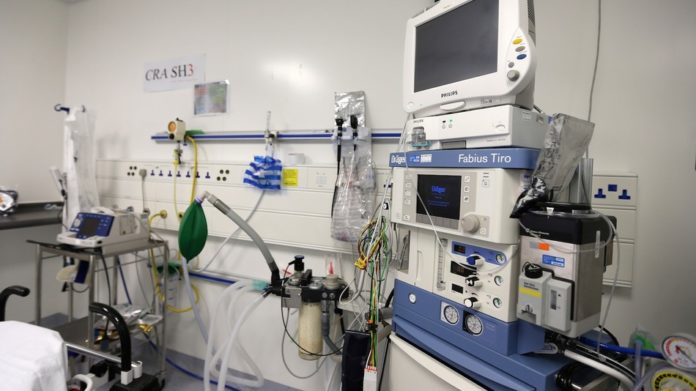Anesthetics may be knocking out Earth’s climate in addition to hospital patients

Some of the most commonly-used anesthetics may be doing more than putting patients to sleep. A new study shows they are accumulating in the planet’s atmosphere, warming the climate by a small but growing amount.
The study, published online in March in the journal Geophysical Research Letters, found that while the contributions of most manmade airborne anesthetics are relatively small when compared to the warming effect of carbon dioxide and methane, which are two of the biggest manmade players in causing global warming, they are increasing the amount of heat trapped in the atmosphere.
The study examines halogenated inhalation anesthetics, rather than anesthetics that are delivered intravenously. These inhalation anesthetics aren’t metabolized during clinical application, and go on to evaporate into the atmosphere. The study found evidence of a “rapid accumulation and ubiquitous presence” of three of these anesthetics in particular: isoflurane, desflurane and sevoflurane.
Each of these gases used for putting patients to sleep prior to and during surgery pack a global warming punch that’s far above their weight class.
Of these three gases, the one with the biggest global warming influence is desflurane, according to the study. For example, 2.2 pounds of desflurane is equivalent to 5,512 pounds of carbon dioxide, in terms of the amount of greenhouse warming potential, according to a press release from the American Geophysical Union.
“On a kilogram-per-kilogram basis, it’s so much more potent” than carbon dioxide, says Martin Vollmer, an atmospheric chemist at the Swiss Federal Laboratories for Materials Science and Technology in Dubendorf, Switzerland, who led the new study, in the release.
Vollmer and his colleagues detected the anesthetics at varying amounts throughout the world, including their presence in the pristine Antarctic atmosphere. The study found that desflurane has an atmospheric concentration of 0.30 parts per trillion, while sevoflurane and halothane were present at 0.13 parts per trillion and 00.0092 parts per trillion.
These chemicals are frequently used anesthetics, the study says. In comparison, carbon dioxide — which hit 400 parts per million last year and is already creeping above that mark at times this year — is a billion times more abundant than these anesthetics, according to the study.
The researchers analyzed air samples from the Northern Hemisphere since 2000, as well as aboard research ships in the North Pacific and Antarctic, in addition to two sites in Switzerland.
The study provides a top-down estimate of global emissions of the anesthetics in 2014, allowing comparisons to be made between these figures and so-called “bottom-up” approaches that rely on gas sales and typical gas escape rates from operating room vents to come up with emissions figures.
A key finding in this study is that many of the anesthetic gases are becoming more prevalent, which raises concerns that they could complicate efforts to reign in global warming, which is already viewed as an extremely complex task.
The fact that the health care sector itself contributes to global warming adds a twist to the White House’s efforts this week to focus on the public health impacts of global warming, such as heat wave-related mortality and vector-borne diseases.
One option for reducing the climate-warming impacts of anesthetics would be to substitute gases with lower global warming potential for gases that contribute more to global warming, such as desflurane. In addition, changing the way some drugs are administered could also cut down on emissions.
